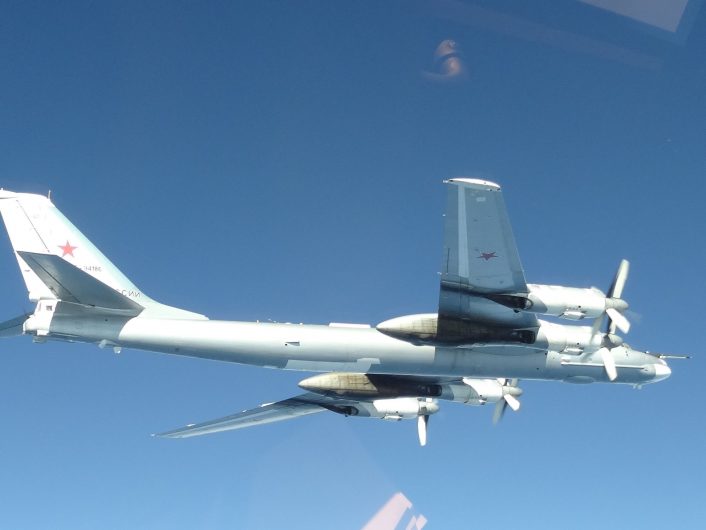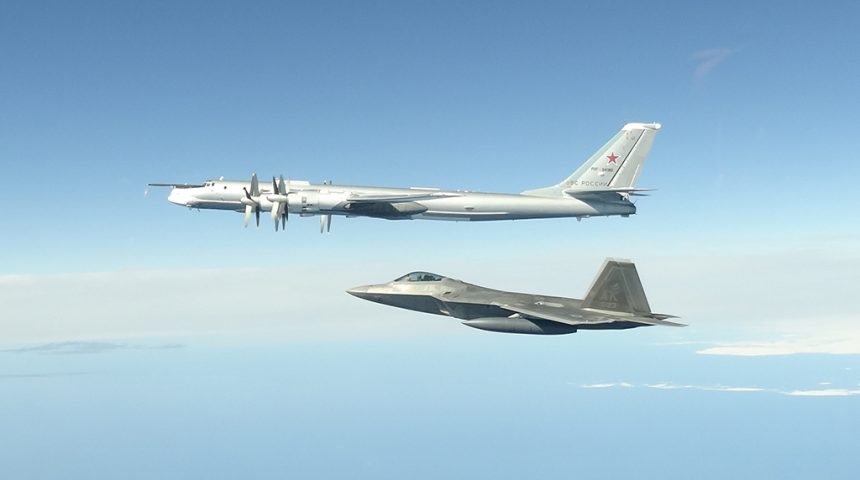It’s always nice to see an intercept from the point of view of both the fighters and the “zombies”.
In what appears to be a remake of the intercept carried out on Jun. 10, 2020, NORAD (North American Aerospace Defense) Command dispatched F-22 Raptors, supported by KC-135 Stratotankers and an E-3 Airborne Warning and Control System, to perform two intercepts of Russian bomber aircraft formations entering the Alaskan Air Defense Identification Zone.
“The first formation of Russian aircraft consisted of two Tu-95 bombers, accompanied by two Su-35 fighter jets and was supported by an A-50 airborne early warning and control aircraft. The second formation consisted of two Tu-95 bombers supported by an A-50. The Russian military aircraft came within 32 nautical miles of Alaskan shores; however, remained in international airspace and at no time did they enter United States sovereign airspace.”
Noteworthy, the bombers came to the same distance (32NM), the second formation flew last week.
Once again:
The ADIZ, or “Air Defense Identification Zone”, where the intercept occurred, is international airspace that extends 200 miles from the U.S./Canadian coastline and is monitored in the interest of national security. U.S. territorial airspace begins only 12 miles from the coastline. Usually, the Russian aircraft stay well clear of the 12-mile U.S. air space limit during their long-range exercises; in this case it at least worth of note that the U.S. Command released details about the distance at which the Russians were intercepted: respectively 20 and 32NM. It would be interesting to understand exactly which were the “Alaskan shores” skirted by the Russian package, to have a clear idea of the area where the intercept occurred: the Aleutinian islands, a chain of 14 large volcanic islands and 55 smaller islands, most of those belonging to Alaska, are quite far from the mainland.
Anyway, both NORAD and the Russian MOD released images or footage of the intercept. Here’s the one released by the Russians:
Here’s a close up image of the Tu-95 released by NORAD:

The four Tu-95MS flew a planned 11-hour flight over the neutral waters of the Chukchi, Bering and Okhotsk Seas, as well as the northern part of the Pacific Ocean, Moscow said. “Long-range pilots regularly fly over the neutral waters of the Arctic, North Atlantic, Pacific Ocean, Black and Baltic Seas. All flights are carried out in strict accordance with the International Rules for the Use of Airspace”.
Yesterday we reported about the intercept of a B-52 by two Russian Su-27 Flankers over the Baltic Sea. What is really amazing is that, while the interceptors change, the U.S. and the Russian bombers (or the “zombies” – as the targets of the interceptors are dubbed in fighter lingo) involved in these close encounters are the same as 50 or even 60 years ago!










